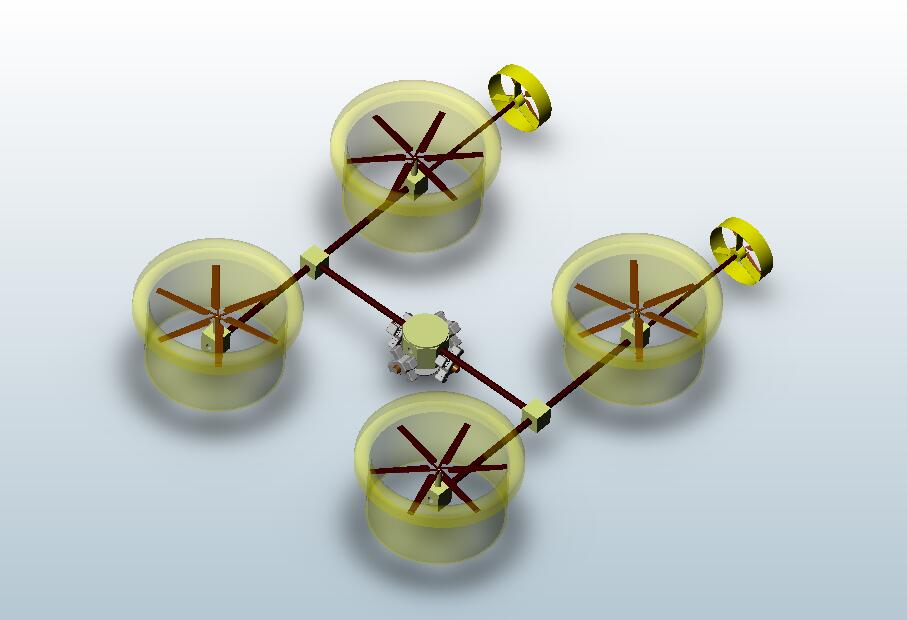|
POWER PLANT
The power plant, around which the complete flight vehicle is designed, consists of four (4) four-cylinder radial piston aero engines with forced air cooling system, mounted on four (4) sides of an octahedral (8) shaped central gearbox. Lift is generated by four horizontal multi-blade wide chord ducted fans attached on diagonal structural beams around the platform's occupied area.
|
|
CONTROL SYSTEM
Fans are connected all between each other (like the four-by-four pickup truck) and driven through a system of shafts and gearboxes and have variable collective pitch. Altitude is controlled by changing the pitches of all four (4) fans together. Pitch, roll and yaw are controlled by applying pitch differentials between pairs of fans, fore and aft pairs for pitch, laterally pairs for roll and diagonal pairs for yaw. Tilting the whole vehicle forward attains forward motion.
FLIGHT SAFETY
EAGLE has sufficient power margin to continue flying and land safely on two engines alone, should two other fail in flight. Each engine has its own carburetor and a separate fuel supply line. Power is delivered from each engine to the gearbox through an overrunning clutch, which, in event of any engine failure disengages it from the gearbox so that it will not interfere with the operation of the remaining engines.
|
|





